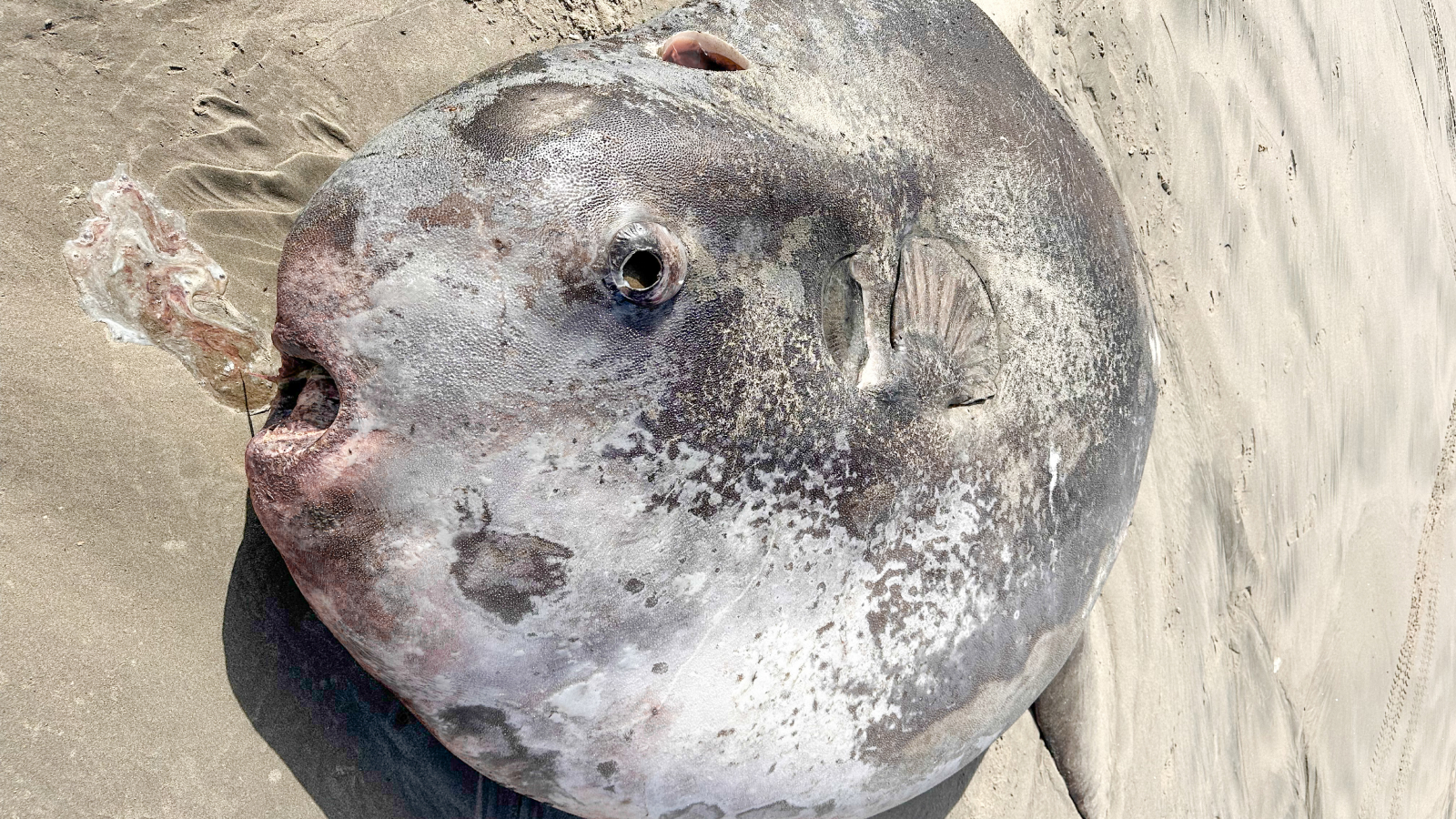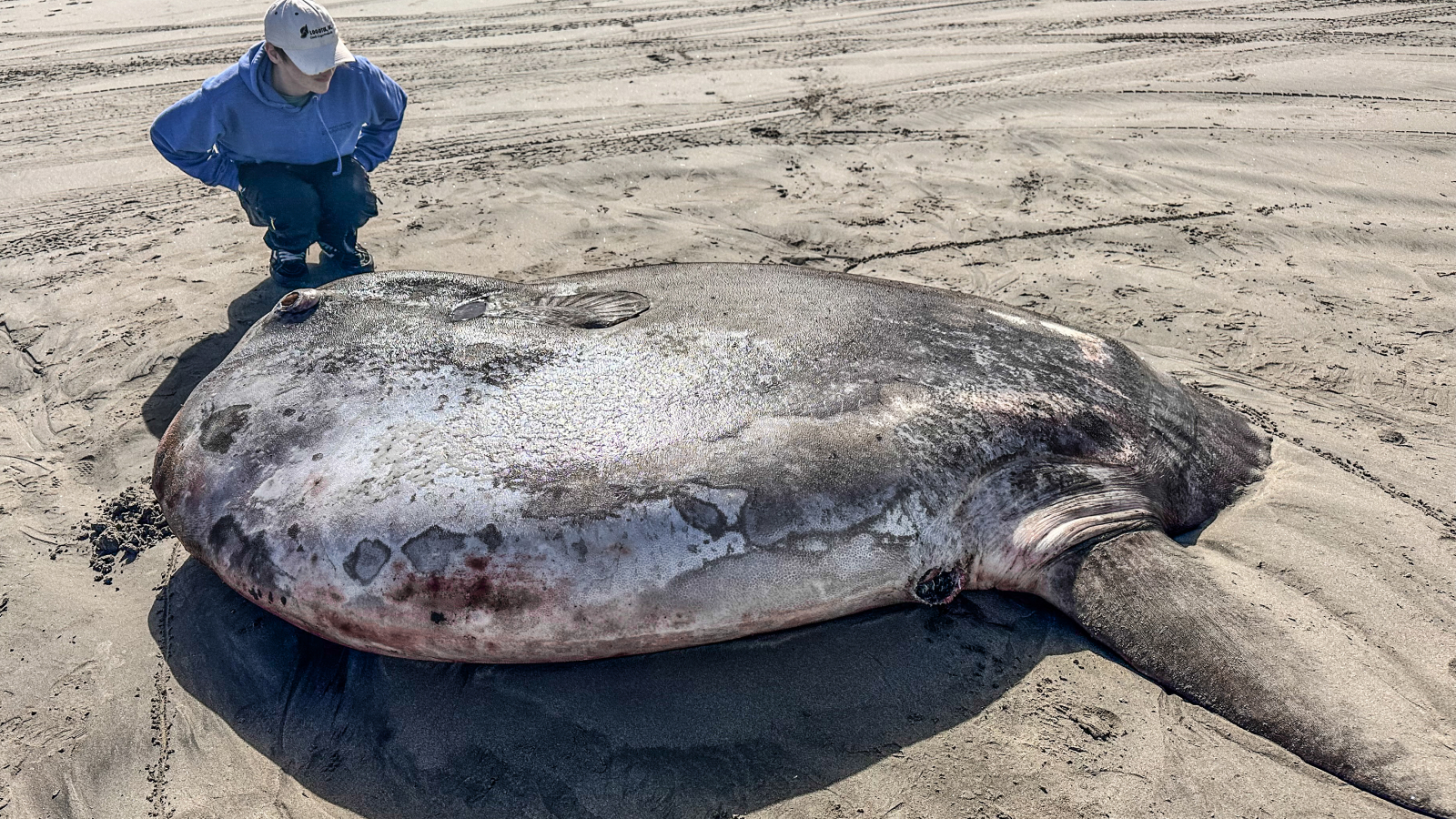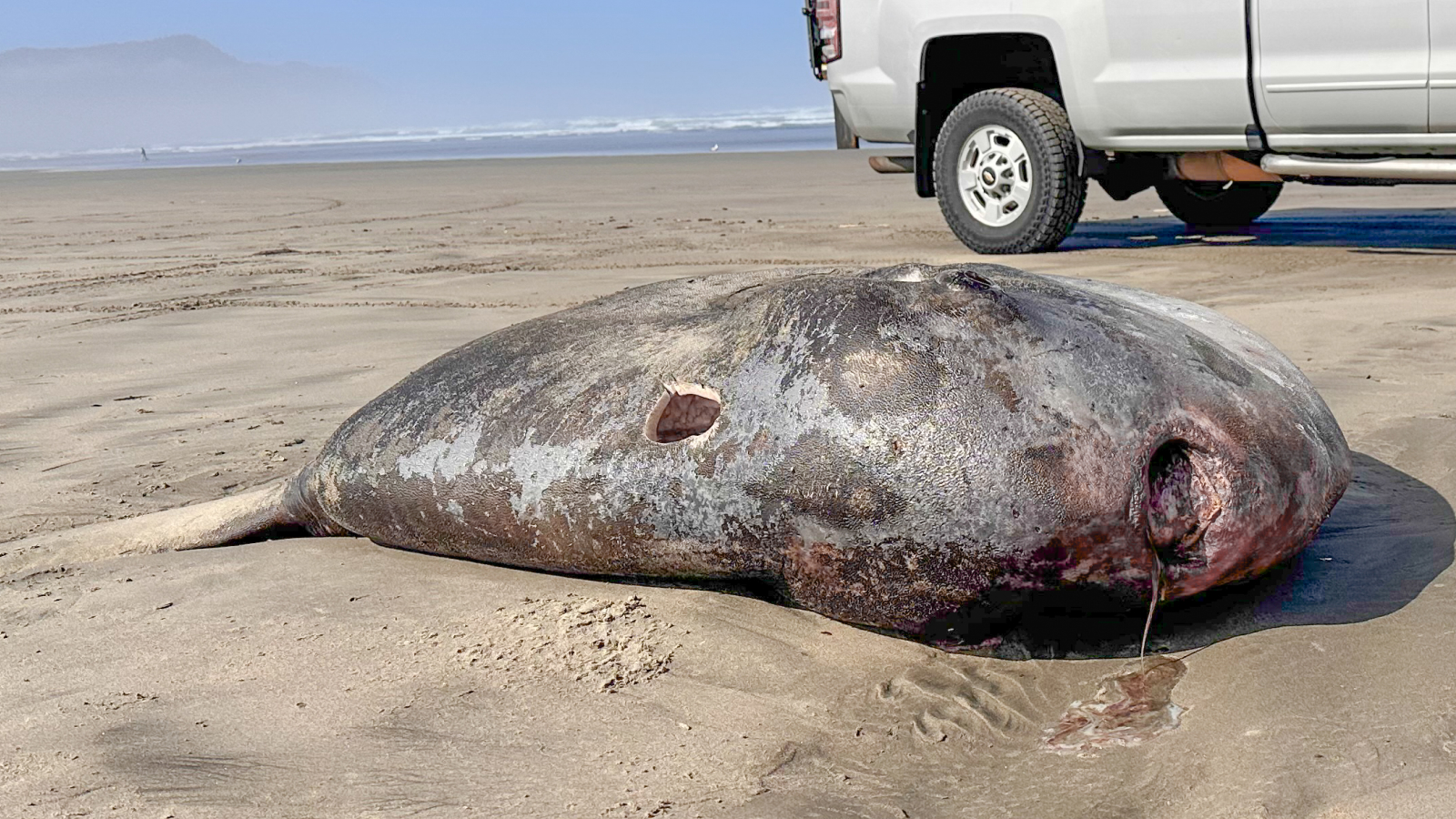
Beachgoers were stunned when a massive, 7-foot-long (2 meters) fish with a round body, huge fins and bulging eyes washed up along the coast of Oregon.
An expert identified the enormous species as a hoodwinker sunfish (Mola tecta), which is one of the largest bony fish in the world and is rarely seen in the Northern Hemisphere.
Seaside Aquarium received reports of the large, circular fish found on the beach in Gearhart, a small town around 80 miles (130 kilometers) northwest of Portland, on June 3. This individual could be the largest of this species ever sampled, according to a Facebook post from Seaside Aquarium.
After news emerged about the giant fish, Marianne Nyegaard, a marine biologist in New Zealand who was involved in the discovery of M. tecta, reached out to Seaside Aquarium and identified it as a rare hoodwinker sunfish.
Seaside Aquarium representatives confirmed this after collecting photos, measurements and tissue samples of the fish. The washed-up specimen measured 7.3 feet (2.2 m) long, making it possibly the largest of its species ever to be sampled.

The hoodwinker sunfish is one of three species of sunfish in the genus Mola. The other two are the ocean sunfish (Mola mola), which is the most abundant of the three species, and the bump-head sunfish (Mola alexandrini). All three species can grow to about 11 feet (3.3 meters) in length and weigh up to 2.3 tons (2,300 kilograms), according to the American Museum of Natural History.
Sunfish feed between depths of 660 and 2,000 feet (200 to 600 m), where they eat jellyfish, small fish and crustaceans. While hunting, temperatures can drop to less than 10 degrees celsius. They are occasionally seen sunbathing close to the sea surface to regulate their body temperature after hunting dives, according to a 2015 study.

Unlike the other species from the genus Molar, which have ridges and grooves along their bodies, the hoodwinker sunfish has a smooth body and clavus — the thick, skinned lobe at the back of its body that acts as a rudder to steer while swimming.
Related: Enormous sunfish surprises paddleboarders off Laguna Beach
It is uncertain where the hoodwinker sunfish came from or why it washed up on Gearhart beach.
The ocean sunfish and bump-head sunfish are widespread across the world in temperate and tropical oceans, but the hoodwinker sunfish was once thought to live only in the Southern Hemisphere, according to oceansunfish.org, and are found mostly in Australia, New Zealand and South Africa.
However, rare sightings as far north as California and Alaska have challenged this idea. It is unknown how far these sunfish traveled, if they migrated or whether these incidents presented an unidentified population in the area.
Nyegaard and colleagues described M. tecta as a new species in 2017, after it had been mistaken for the most abundant sunfish, M. mola, for decades.
The combination of rare sightings, the difficulty of storing specimens and misidentified cases led this trickster species to be named the hoodwinker. The species name, "tecta," is derived from the Latin word "tectus," which means "disguised" or "hidden," according to the study.







